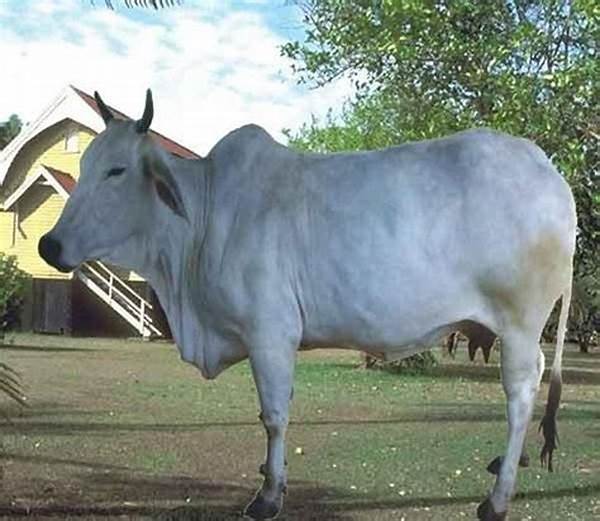LOW PRODUCTIVITY OF INDIAN DAIRY ANIMALS: CHALLENGES & MITIGATION STRATEGIES
Mathivathani C
Assistant Professor,
Department of Veterinary Parasitology,
Rajiv Gandhi Institute of Veterinary Education and Research, Puducherry
Email: mathivathani.c@river.edu.in
INTRODUCTION
The dairy sector is a critical component of India’s agricultural economy, contributing significantly to rural livelihoods and national GDP. However, despite having the largest dairy herd in the world, India’s dairy animals have low productivity compared to global standards. This article explores the multifaceted challenges contributing to this low productivity and presents mitigation strategies to enhance the performance of the dairy sector.
CHALLENGES
- Genetic Factors
– Indigenous Breeds: Many Indian dairy animals are indigenous breeds that are not primarily bred for high milk yield. While these breeds are well-adapted to local climates and resistant to diseases, their milk production is significantly lower than that of high-yielding exotic breeds.
– Crossbreeding Issues: Efforts to crossbreed indigenous cows with exotic breeds like Holstein Friesian and Jersey have faced challenges, including managing the health and adaptability of crossbred animals.
- Nutrition and Feeding Practices
– Poor Quality Feed: A significant challenge is the inadequate availability of quality feed and fodder. Many dairy farmers rely on crop residues, which are nutritionally inferior, leading to suboptimal milk production.
– Unbalanced Diets: Lack of awareness and access to balanced rations results in deficiencies of essential nutrients, affecting animal health and productivity.
- Healthcare and Management
– Inadequate Veterinary Services: Limited access to veterinary services and poor healthcare management contribute to high morbidity and mortality rates among dairy animals, impacting productivity.
– Substandard Housing and Sanitation: Poor housing conditions and inadequate sanitation can lead to diseases and stress, further reducing milk yield.
- Socio-Economic Factors
– Small Herd Sizes: Most Indian dairy farmers are smallholders with limited resources, leading to smaller herd sizes that do not benefit from economies of scale.
– Financial Constraints: Limited access to credit and financial services restricts farmers’ ability to invest in quality inputs and infrastructure.
- Climate and Environmental Challenges
– Climate Change: Increasing temperatures and changing weather patterns adversely affect animal health and feed availability, further lowering productivity.
– Water Scarcity: Water shortages can affect both feed production and animal hydration, impacting milk yield.
MITIGATION STRATEGIES
- Genetic Improvement Programs
– Selective Breeding: Implementing robust selective breeding programs to enhance the genetic potential of indigenous breeds can improve milk yields while maintaining their resilience to local conditions.
– Artificial Insemination: Expanding artificial insemination services with quality semen from high-yielding bulls can accelerate genetic improvement.
- Enhancing Nutrition
– Balanced Feed Rations: Promoting the use of balanced feed rations tailored to the nutritional needs of dairy animals can significantly improve milk production.
– Fodder Development: Encouraging the cultivation of high-yielding and nutritious fodder crops, along with the use of silage and haylage, can ensure a year-round supply of quality feed.
- Improving Healthcare and Management
– Strengthening Veterinary Services: Enhancing veterinary infrastructure, training para-veterinarians, and improving disease surveillance can reduce morbidity and mortality.
– Better Housing and Sanitation: Providing guidelines and support for better animal housing and sanitation practices can mitigate disease risk and stress.
- Economic and Financial Interventions
– Access to Credit: Facilitating easier access to credit and insurance for dairy farmers can enable investments in quality inputs and infrastructure.
– Cooperative Models: Strengthening dairy cooperatives can help smallholders achieve better market access, collective bargaining, and economies of scale.
- Addressing Climate Challenges
– Climate-Resilient Practices: Promoting climate-resilient agricultural practices, such as drought-resistant fodder crops and efficient water management techniques, can mitigate the impact of climate change.
– Sustainable Farming Practices: Encouraging sustainable practices like integrated crop-livestock systems can enhance resource use efficiency and productivity.
CONCLUSION
The low productivity of Indian dairy animals is a complex issue influenced by genetic, nutritional, healthcare, socio-economic, and environmental factors. Addressing these challenges requires a multi-pronged approach involving genetic improvement, better nutrition and healthcare, economic support, and climate resilience. By implementing these strategies, India can enhance the productivity of its dairy sector, ensuring better livelihoods for farmers and a sustainable supply of dairy products.


